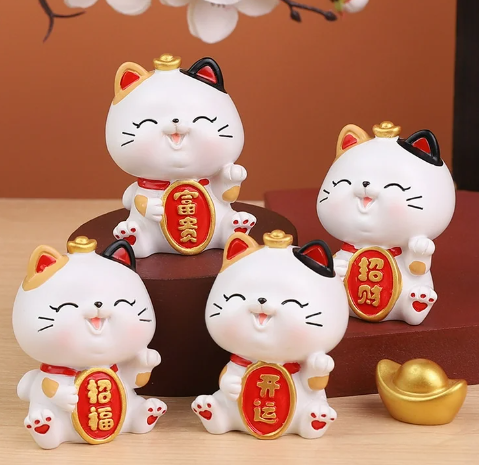Lucky Cat Statues: A Charming Element of Chinese Culture
Lucky cat statues, also known as “Maneki-neko,” have captured the hearts and homes of many around the world. These charming figures, with their raised paw and welcoming demeanor, are often seen in shops, homes, and restaurants, symbolizing good fortune, prosperity, and happiness. Understanding their cultural significance can deepen our appreciation for these adorable icons.
1. The Origin of Lucky Cat Statues
The origins of lucky cat statues can be traced back to Japan, but their influence quickly spread to China and beyond. These statues are typically modeled after a calico cat and are believed to bring good luck and wealth to their owners. According to lore, a Japanese temple priest adopted a stray cat, which later helped him gain wealth and prosperity. The raised paw of the lucky cat is thought to beckon customers and success. Today, these figures continue to thrive in Asian culture, symbolizing an inviting atmosphere wherever they are placed.
2. Symbolism and Meaning
Each detail of a lucky cat statue is steeped in meaning. The raised left paw traditionally signifies the welcoming of customers and financial success, while the right paw indicates protection and good fortune. The colors of the statues also carry significance: a golden cat is often associated with wealth, while a black cat symbolizes protection. Additionally, accessories like a koban coin, which represents a million in old currency, further emphasize the wish for abundance. This rich symbolism makes lucky cat statues not just decorative pieces but also meaningful additions to any setting.
3. Cultural Significance and Popularity
In Chinese culture, the lucky cat is seen as a guardian against evil spirits and misfortune, making it a common decorative element in businesses. People often place these statues near entrances to attract fortune and visitors. Their popularity has led to various interpretations and designs, blending traditional craftsmanship with modern aesthetics. As these statues continue to find homes across various cultures, they serve as a bridge connecting different beliefs and traditions, reinforcing the universal desire for prosperity and good vibes.
Conclusion
Lucky cat statues are more than charming decorations; they represent a rich cultural history and a universal wish for good fortune. Whether you’re looking to enhance your home decor or invite positivity into your life, a lucky cat statue could be a delightful addition. Explore the vibrant world of these charismatic figures and discover how they can brighten your space and attract good luck!

